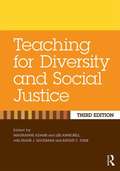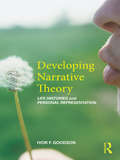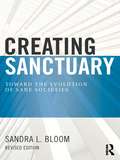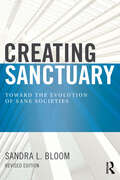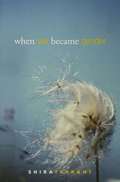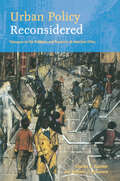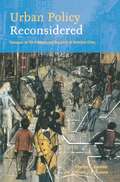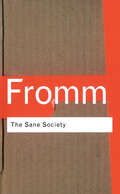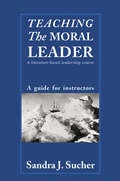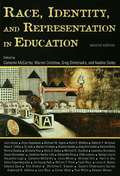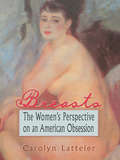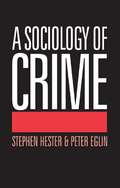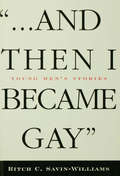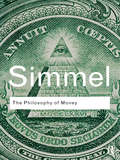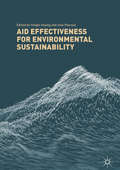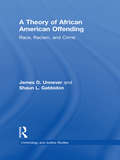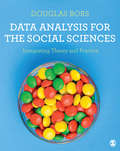- Table View
- List View
Teaching For Diversity And Social Justice
by Maurianne Adams Lee Anne BellFor twenty years, Teaching for Diversity and Social Justice has been the definitive sourcebook of theoretical foundations, pedagogical and design frameworks, and curricular models for social justice teaching practice. Thoroughly revised and updated, this third edition continues in the tradition of its predecessors to cover the most relevant issues and controversies in social justice education in a practical, hands-on format. Filled with ready-to-apply activities and discussion questions, this book provides teachers and facilitators with an accessible pedagogical approach to issues of oppression in classrooms. The revised edition also focuses on providing students the tools needed to apply their learning about these issues. Features new to this edition include: A new bridging chapter focusing on the core concepts that need to be included in all SJE practice and illustrating ways of "getting started" teaching foundational core concepts and processes. A new chapter addressing the possibilities for adapting social justice education to online and blended courses. Expanded overview sections that highlight the historical contexts and legacies of oppression, opportunities for action and change, and the intersections among forms of oppression. Added coverage of key topics for teaching social justice issues, such as establishing a positive classroom climate, institutional and social manifestations of oppression, the global implications of contemporary SJE work, and action steps for addressing injustice. New and revised material for each of the core chapters in the book complemented by fully-developed online teaching designs, including over 150 downloadables, activities, and handouts on the book's Companion Website (www. routledgetextbooks. com/textbooks/_author/teachingfordiversity). A classic for teachers across disciplines, Teaching for Diversity and Social Justice presents a thoughtful, well-constructed, and inclusive foundation for engaging students in the complex and often daunting problems of discrimination and inequality. in American society.
Developing Narrative Theory: Life Histories and Personal Representation
by Ivor GoodsonWe live in an age of narrative: life stories are a crucial ingredient in what makes us human and, in turn, what kind of human they make us. In recent years, narrative analysis has grown and is used across many areas of research. Interest in this rapidly developing approach now requires the firm theoretical underpinning that would allow researchers to both approach such research in a reliably structured way, and to interpret the results more effectively. Developing Narrative Theory looks at the contemporary need to study life narratives, considers the emergence and salience of life narratives in contemporary culture, and discusses different forms of narrativity. It shows in detail how life story interviews are conducted, and demonstrates how the process often begins with relatively unstructured life story collection but moves to a more collaborative exchange, where sociological themes and historical patterns are scrutinised and mutually explored. At the core of this book, the author shows that, far from there being a singular form of narrative or an infinite range of unique and idiosyncratic narratives, there are in fact clusters of narrativity and particular types of narrative style. These can be grouped into four main areas: Focussed Elaborators; Scripted Describers; Armchair Elaborators; and Focussed Describers. Drawing on data from several large-scale studies from countries across the world, Professor Goodson details how theories of narrativity and life story analysis can combine to inform learning potential. Timely and innovative, this book will be of use to all of those employing narrative and life history methods in their research. It will also be of interest to those working in lifelong learning and with professional and self development practices.
Developing Narrative Theory: Life Histories and Personal Representation (PDF)
by Ivor GoodsonWe live in an age of narrative: life stories are a crucial ingredient in what makes us human and, in turn, what kind of human they make us. In recent years, narrative analysis has grown and is used across many areas of research. Interest in this rapidly developing approach now requires the firm theoretical underpinning that would allow researchers to both approach such research in a reliably structured way, and to interpret the results more effectively. Developing Narrative Theory looks at the contemporary need to study life narratives, considers the emergence and salience of life narratives in contemporary culture, and discusses different forms of narrativity. It shows in detail how life story interviews are conducted, and demonstrates how the process often begins with relatively unstructured life story collection but moves to a more collaborative exchange, where sociological themes and historical patterns are scrutinised and mutually explored. At the core of this book, the author shows that, far from there being a singular form of narrative or an infinite range of unique and idiosyncratic narratives, there are in fact clusters of narrativity and particular types of narrative style. These can be grouped into four main areas: Focussed Elaborators; Scripted Describers; Armchair Elaborators; and Focussed Describers. Drawing on data from several large-scale studies from countries across the world, Professor Goodson details how theories of narrativity and life story analysis can combine to inform learning potential. Timely and innovative, this book will be of use to all of those employing narrative and life history methods in their research. It will also be of interest to those working in lifelong learning and with professional and self development practices.
Creating Sanctuary: Toward the Evolution of Sane Societies, Revised Edition
by Sandra L BloomCreating Sanctuary is a description of a hospital-based program to treat adults who had been abused as children and the revolutionary knowledge about trauma and adversity that the program was based upon. This book focuses on the biological, psychological, and social aspects of trauma. Fifteen years later, Dr. Sandra Bloom has updated this classic work to include the groundbreaking Adverse Childhood Experiences Study that came out in 1998, information about Epigenetics, and new material about what we know about the brain and violence. This book is for courses in counseling, social work, and clinical psychology on mental health, trauma, and trauma theory.
Creating Sanctuary: Toward the Evolution of Sane Societies, Revised Edition
by Sandra L BloomCreating Sanctuary is a description of a hospital-based program to treat adults who had been abused as children and the revolutionary knowledge about trauma and adversity that the program was based upon. This book focuses on the biological, psychological, and social aspects of trauma. Fifteen years later, Dr. Sandra Bloom has updated this classic work to include the groundbreaking Adverse Childhood Experiences Study that came out in 1998, information about Epigenetics, and new material about what we know about the brain and violence. This book is for courses in counseling, social work, and clinical psychology on mental health, trauma, and trauma theory.
When Sex Became Gender
by Shira TarrantWhen Sex Became Gender is a study of post-World War II feminist theory from the viewpoint of intellectual history. The key theme is that ideas about the social construction of gender have its origins in the feminist theorists of the postwar period, and that these early ideas about gender became a key foundational paradigm for both second and third wave feminist thought. These conceptual foundations were created by a cohort of extraordinarily imaginative and bold academic women. While discussing the famous feminist scholars—Simone de Beauvoir, Margaret Mead—the book also hinges on the work of scholars who are lesser known to American audiences—Mirra Komarovsky, Viola Klein, and Ruth Herschberger, The postwar years have been an overlooked period in the development of feminist theory and philosophy and Tarrant makes a compelling case for this era being the turning point in the study of gender.
Urban Policy Reconsidered: Dialogues on the Problems and Prospects of American Cities
by Charles Euchner Stephen McGovernIn the past decade, America has experienced an urban renaissance. Cities as varied as New York, Chicago and Boston are no longer seen as ungovernable and doomed to crime and blight. However, they still face formidable problems. Urban Policy Reconsidered is a comprehensive overview of the issues and problems facing our cities today and cover every important issue in urban affairs. What is poverty? What is economic development? What is education? What is crime? As well as covering all of these fundamental topics in-depth, the author propose a communitarian approach to addressing the many problems of our cities. This book will be the manual for anyone interested in understanding urban policy.
Urban Policy Reconsidered: Dialogues on the Problems and Prospects of American Cities
by Charles Euchner Stephen McGovernIn the past decade, America has experienced an urban renaissance. Cities as varied as New York, Chicago and Boston are no longer seen as ungovernable and doomed to crime and blight. However, they still face formidable problems. Urban Policy Reconsidered is a comprehensive overview of the issues and problems facing our cities today and cover every important issue in urban affairs. What is poverty? What is economic development? What is education? What is crime? As well as covering all of these fundamental topics in-depth, the author propose a communitarian approach to addressing the many problems of our cities. This book will be the manual for anyone interested in understanding urban policy.
The Sane Society
by Erich FrommFollowing the publication of the seminal Fear of Freedom, Erich Fromm applied his unique vision to a critique of contemporary capitalism in The Sane Society. Where the former dealt with man's historic inability to come to terms with his sense of isolation, and the dangers to which this can lead, The Sane Society took his theories one step further. In doing so it established Fromm as one of the most controversial political thinkers of his generation. Anaylsing how individuals conform to contemporary capitalist and patriarchal societies, the book was published to wide acclaim and even wider disapproval. It was a scathing indictment of modern capitalism and as such proved unwelcome to many. Unwelcome because much of what Fromm had to say was true. Today, as we settle into the challenges of the 21st century, Fromm's writings are just as relevant as when they were first written. Read it and decide for yourself - are you living in a sane society?
Teaching The Moral Leader: A Guide for Instructors
by Sandra J. SucherThis book is a comprehensive, practical manual to help instructors integrate moral leadership in their own courses, drawing from the experience and resources of the Harvard Business School course 'The Moral Leader', an MBA elective taken by thousands of HBS students over nearly twenty years. Through the close study of literature--novels, plays, and historical accounts-- followed by rigorous classroom discussion, this innovative course encourages students to confront fundamental moral challenges, to develop skills in moral analysis and judgment, and to come to terms with their own definition of moral leadership. Using this guide's background material and detailed teaching plans, instructors will be well prepared to lead their students in the study of this vital and important subject. Featuring a website to run alongside that links the manual with the textbook and provides a wealth of extra resources, including on-line links to Harvard Business School case studies and teaching notes this manual forms a perfect complement to The Moral Leader core text also by Sandra Sucher. The detailed and hands-on nature of the guide makes it possible for instructors, with or without a specialized background, to replicate the 13-session Harvard Business School course, or to integrate moral leadership into an existing course, or as a module, or as stand-alone sessions. The manual presents flexible class plans, easily adaptable to a wide variety of business and academic topics. It suggests how to adapt the course to other settings, provides supporting materials, and reviews the approach to teaching "The Moral Leader," differentiating it from other literature-based courses. The author, a Harvard Business School professor with a successful record in teaching this course, also brings into the text the kind of real world understanding of effective leadership development that comes from decades of experience as a high level corporate executive. An accompanying student book, focused on class preparation and the context of each work, helps students address questions like: What is the nature of a moral challenge? How do people "reason morally"? How do leaders – formal and informal – contend with the moral choices they face? How is moral leadership different from leadership of any other kind? Struggling with these questions, both individually and as members of a vibrant learning community, students internalize moral leadership concepts and choices, and develop the skills to pursue it in their careers and personal lives.
Teaching The Moral Leader: A Guide for Instructors
by Sandra J. SucherThis book is a comprehensive, practical manual to help instructors integrate moral leadership in their own courses, drawing from the experience and resources of the Harvard Business School course 'The Moral Leader', an MBA elective taken by thousands of HBS students over nearly twenty years. Through the close study of literature--novels, plays, and historical accounts-- followed by rigorous classroom discussion, this innovative course encourages students to confront fundamental moral challenges, to develop skills in moral analysis and judgment, and to come to terms with their own definition of moral leadership. Using this guide's background material and detailed teaching plans, instructors will be well prepared to lead their students in the study of this vital and important subject. Featuring a website to run alongside that links the manual with the textbook and provides a wealth of extra resources, including on-line links to Harvard Business School case studies and teaching notes this manual forms a perfect complement to The Moral Leader core text also by Sandra Sucher. The detailed and hands-on nature of the guide makes it possible for instructors, with or without a specialized background, to replicate the 13-session Harvard Business School course, or to integrate moral leadership into an existing course, or as a module, or as stand-alone sessions. The manual presents flexible class plans, easily adaptable to a wide variety of business and academic topics. It suggests how to adapt the course to other settings, provides supporting materials, and reviews the approach to teaching "The Moral Leader," differentiating it from other literature-based courses. The author, a Harvard Business School professor with a successful record in teaching this course, also brings into the text the kind of real world understanding of effective leadership development that comes from decades of experience as a high level corporate executive. An accompanying student book, focused on class preparation and the context of each work, helps students address questions like: What is the nature of a moral challenge? How do people "reason morally"? How do leaders – formal and informal – contend with the moral choices they face? How is moral leadership different from leadership of any other kind? Struggling with these questions, both individually and as members of a vibrant learning community, students internalize moral leadership concepts and choices, and develop the skills to pursue it in their careers and personal lives.
Race, Identity, and Representation in Education
by Warren CrichlowThis stunning new edition retains the book's broad aims, intended audience, and multidisciplinary approach. New chapters take into account the more current backdrop of globalization, particularly events such as 9/11, and attendant developments that make a reconsideration of race relations in education quite urgent.
Breasts: The Women's Perspective on an American Obsession
by Ellen Cole Esther D RothblumBreasts: The Women’s Perspective on an American Obsession describes and explores our national breast fetish, which is defined as a culturally constructed obsession that is deeply interwoven with beauty standards, breastfeeding practices, and sexuality. By tracing the complex history of this erotic fascination and discovering how it affects men’s and women’s sexuality and their relationships, this book will help women accept their breasts as they are and provide male readers with insight into how women think and feel about their bodies. This awareness will enable them to better understand and empathize with women’s experiences as objects of a cultural fetish.Focusing on adult joys and anxieties about breasts, sex, and breastfeeding, this text uses research and expert opinions from several different fields, including psychology, anthropology, sociology, mythology, and sexology. You will find several other issues in Breasts: The Women’s Perspective on an American Obsession that involve men’s and women’s struggles with this obsession, such as: breast implants human psychology and breasts beauty standards and breast sexuality how breasts are portrayed in mythology and art how ancient religions saw the breast as a sign of motherhood and giver of life ”breast men” debates on how and why the breast evolved adolescent girls and breasts breast activists, such as La Leche League, who are proponents of breastfeeding in publicThrough personal interviews with men and women, Breasts: The Women’s Perspective on an American Obsession also addresses women’s pride and shame about their breasts and their confusion about the attention their breasts receive. Ultimately, this exploration of breast obsession sheds light on our society’s general fear of and ambivalence toward women’s bodies. Breasts: The Women’s Perspective on an American Obsession shows you that breasts have a venerable history and urges you to see beyond the contemporary standards of visual perfection to give you an overall sense of the female body’s power and worth.
Breasts: The Women's Perspective on an American Obsession
by Ellen Cole Esther D RothblumBreasts: The Women’s Perspective on an American Obsession describes and explores our national breast fetish, which is defined as a culturally constructed obsession that is deeply interwoven with beauty standards, breastfeeding practices, and sexuality. By tracing the complex history of this erotic fascination and discovering how it affects men’s and women’s sexuality and their relationships, this book will help women accept their breasts as they are and provide male readers with insight into how women think and feel about their bodies. This awareness will enable them to better understand and empathize with women’s experiences as objects of a cultural fetish.Focusing on adult joys and anxieties about breasts, sex, and breastfeeding, this text uses research and expert opinions from several different fields, including psychology, anthropology, sociology, mythology, and sexology. You will find several other issues in Breasts: The Women’s Perspective on an American Obsession that involve men’s and women’s struggles with this obsession, such as: breast implants human psychology and breasts beauty standards and breast sexuality how breasts are portrayed in mythology and art how ancient religions saw the breast as a sign of motherhood and giver of life ”breast men” debates on how and why the breast evolved adolescent girls and breasts breast activists, such as La Leche League, who are proponents of breastfeeding in publicThrough personal interviews with men and women, Breasts: The Women’s Perspective on an American Obsession also addresses women’s pride and shame about their breasts and their confusion about the attention their breasts receive. Ultimately, this exploration of breast obsession sheds light on our society’s general fear of and ambivalence toward women’s bodies. Breasts: The Women’s Perspective on an American Obsession shows you that breasts have a venerable history and urges you to see beyond the contemporary standards of visual perfection to give you an overall sense of the female body’s power and worth.
A Sociology of Crime
by Peter Eglin Stephen HesterThe authors take three particular sociological perspectives, and use them to offer a distinct and critical reading of criminology, highlighting the ways that crime is, first and foremost, a matter of social definition. They provide a good introductory text which will be of great value to students.
A Sociology of Crime
by Peter Eglin Stephen HesterThe authors take three particular sociological perspectives, and use them to offer a distinct and critical reading of criminology, highlighting the ways that crime is, first and foremost, a matter of social definition. They provide a good introductory text which will be of great value to students.
...And Then I Became Gay: Young Men's Stories
by Ritch Williams-Savin"...And Then I Became Gay is about the lives of young men who express the complications, adversities, and satisfactions of being a sexual outsider in North America during the 1980s and 1990s. Consisting of narratives which chronicle developmental progression from first memories of being attracted to other males to a subsequent integration of their sexual identity with a personal identity, this book is also unique in its cross-section of men from different ethnic backgrounds. Although each story in this volume has a personal meaning to the individual youth disclosing it, aspects of these narratives can express a normative experience growing up gay or bisexual during the past two decades. For many of the contributors and readers, these stories may prove to be not only ones of coming out, but coming of age.
...And Then I Became Gay: Young Men's Stories
by Ritch Williams-Savin"...And Then I Became Gay is about the lives of young men who express the complications, adversities, and satisfactions of being a sexual outsider in North America during the 1980s and 1990s. Consisting of narratives which chronicle developmental progression from first memories of being attracted to other males to a subsequent integration of their sexual identity with a personal identity, this book is also unique in its cross-section of men from different ethnic backgrounds. Although each story in this volume has a personal meaning to the individual youth disclosing it, aspects of these narratives can express a normative experience growing up gay or bisexual during the past two decades. For many of the contributors and readers, these stories may prove to be not only ones of coming out, but coming of age.
The Philosophy of Money
by Georg Simmel David FrisbyWith a new foreword by Charles Lemert 'Its greatness...lies in ceaseless and varied use of the money form to unearth and conceptually reveal incommensurabilities of all kinds, in social reality fully as much as in thought itself.' - Fredric Jameson In The Philosophy of Money, Georg Simmel puts money on the couch. He provides us with a classic analysis of the social, psychological and philosophical aspects of the money economy, full of brilliant insights into the forms that social relationships take. He analyzes the relationships of money to exchange, human personality, the position of women, and individual freedom. Simmel also offers us prophetic insights into the consequences of the modern money economy and the division of labour, in particular the processes of alienation and reification in work and urban life. An immense and profound piece of work it demands to be read today and for years to come as a stunning account of the meaning, use and culture of money. Georg Simmel (1858-1918) was born in Berlin, the youngest of seven children. He studied philosophy and history at the University of Berlin and was one of the first generation of great German sociologists that included Max Weber.
The Philosophy of Money
by Georg Simmel David FrisbyWith a new foreword by Charles Lemert 'Its greatness...lies in ceaseless and varied use of the money form to unearth and conceptually reveal incommensurabilities of all kinds, in social reality fully as much as in thought itself.' - Fredric Jameson In The Philosophy of Money, Georg Simmel puts money on the couch. He provides us with a classic analysis of the social, psychological and philosophical aspects of the money economy, full of brilliant insights into the forms that social relationships take. He analyzes the relationships of money to exchange, human personality, the position of women, and individual freedom. Simmel also offers us prophetic insights into the consequences of the modern money economy and the division of labour, in particular the processes of alienation and reification in work and urban life. An immense and profound piece of work it demands to be read today and for years to come as a stunning account of the meaning, use and culture of money. Georg Simmel (1858-1918) was born in Berlin, the youngest of seven children. He studied philosophy and history at the University of Berlin and was one of the first generation of great German sociologists that included Max Weber.
Aid Effectiveness for Environmental Sustainability
by Yongfu Huang Unai PascualThis collection examines the role that foreign aid can play in dealing with the severe global challenge of climate change, one of the most pressing international development issues of the 21st century. Addressing the key threats of rising temperatures, changes in precipitation, coastal erosion and natural disasters, the book considers the implications for policy and future research, particularly in developing countries. Focusing on the worth of foreign aid in ensuring environmental sustainability, this collection consider how it can be used to improve access to sustainable energy, to promote efficient use of energy resources, to improve emission reduction and support the preservation of biodiversity in forests. Advancing our knowledge about foreign aid and climate change, it provides policy recommendations for the donors and recipient country governments. A cutting edge text on one of the most pressing international development issues of this century, this is key reading for all scholars of international development and climate change.
Aid Effectiveness for Environmental Sustainability
by Yongfu Huang Unai PascualThis collection examines the role that foreign aid can play in dealing with the severe global challenge of climate change, one of the most pressing international development issues of the 21st century. Addressing the key threats of rising temperatures, changes in precipitation, coastal erosion and natural disasters, the book considers the implications for policy and future research, particularly in developing countries. Focusing on the worth of foreign aid in ensuring environmental sustainability, this collection consider how it can be used to improve access to sustainable energy, to promote efficient use of energy resources, to improve emission reduction and support the preservation of biodiversity in forests. Advancing our knowledge about foreign aid and climate change, it provides policy recommendations for the donors and recipient country governments. A cutting edge text on one of the most pressing international development issues of this century, this is key reading for all scholars of international development and climate change.
A Theory of African American Offending: Race, Racism, and Crime
by James D. Unnever Shaun L. GabbidonA little more than a century ago, the famous social scientist W.E.B. Du Bois asserted that a true understanding of African American offending must be grounded in the "real conditions" of what it means to be black living in a racial stratified society. Today and according to official statistics, African American men – about six percent of the population of the United States – account for nearly sixty percent of the robbery arrests in the United States. To the authors of this book, this and many other glaring racial disparities in offending centered on African Americans is clearly related to their unique history and to their past and present racial subordination. Inexplicably, however, no criminological theory exists that fully articulates the nuances of the African American experience and how they relate to their offending. In readable fashion for undergraduate students, the general public, and criminologists alike, this book for the first time presents the foundations for the development of an African American theory of offending.
A Theory of African American Offending: Race, Racism, and Crime
by James D. Unnever Shaun L. GabbidonA little more than a century ago, the famous social scientist W.E.B. Du Bois asserted that a true understanding of African American offending must be grounded in the "real conditions" of what it means to be black living in a racial stratified society. Today and according to official statistics, African American men – about six percent of the population of the United States – account for nearly sixty percent of the robbery arrests in the United States. To the authors of this book, this and many other glaring racial disparities in offending centered on African Americans is clearly related to their unique history and to their past and present racial subordination. Inexplicably, however, no criminological theory exists that fully articulates the nuances of the African American experience and how they relate to their offending. In readable fashion for undergraduate students, the general public, and criminologists alike, this book for the first time presents the foundations for the development of an African American theory of offending.
Data Analysis for the Social Sciences: Integrating Theory and Practice
by Professor Douglas Bors'This book fosters in-depth understanding of the logic underpinning the most common statistical tests within the behavioural sciences. By emphasising the shared ground between these tests, the author provides crucial scaffolding for students as they embark upon their research journey.' —Ruth Horry, Psychology, Swansea University 'This unique text presents the conceptual underpinnings of statistics as well as the computation and application of statistics to real-life situations--a combination rarely covered in one book. A must-have for students learning statistical techniques and a go-to handbook for experienced researchers.' —Barbra Teater, Social Work, College of Staten Island, City University of New York Accessible, engaging, and informative, this book will help any social science student approach statistics with confidence. With a well-paced and well-judged integrated approach rather than a simple linear trajectory, this book progresses at a realistic speed that matches the pace at which statistics novices actually learn. Packed with global, interdisciplinary examples that ground statistical theory and concepts in real-world situations, it shows students not only how to apply newfound knowledge using IBM SPSS Statistics, but also why they would want to. Spanning statistics basics like variables, constants, and sampling through to t-tests, multiple regression and factor analysis, it builds statistical literacy while also covering key research principles like research questions, error types and results reliability. It shows you how to: Describe data with graphs, tables, and numbers Calculate probability and value distributions Test a priori and post hoc hypotheses Conduct Chi-squared tests and observational studies Structure ANOVA, ANCOVA, and factorial designs Supported by lots of visuals and a website with interactive demonstrations, author video, and practice datasets, this book is the student-focused companion to support students through their statistics journeys.
